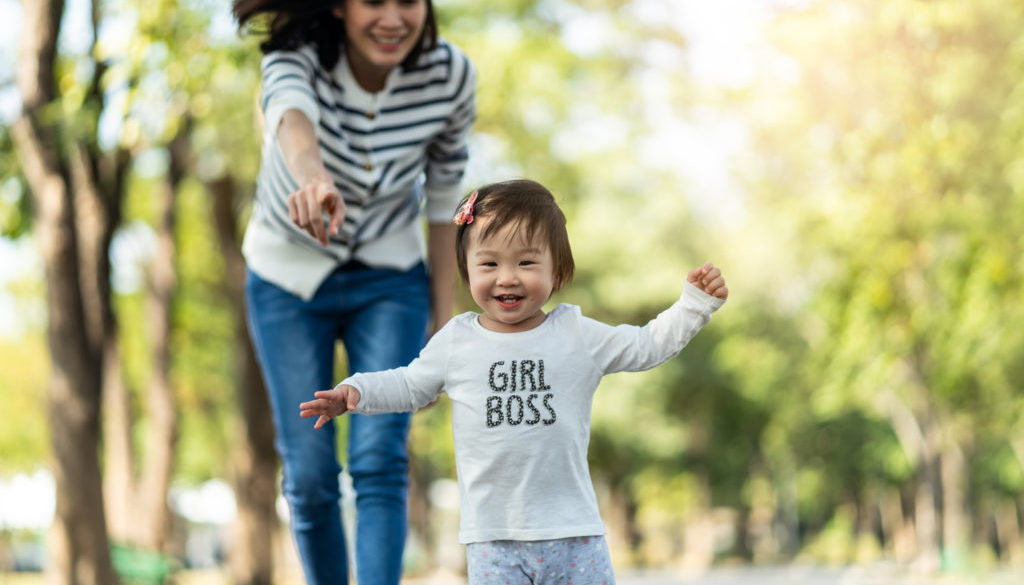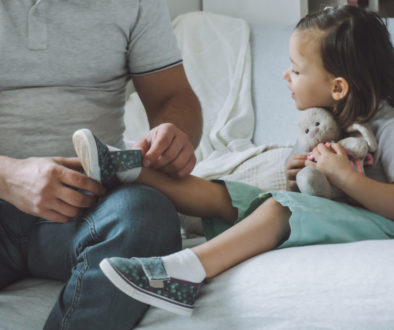On The Move!

Starting from birth, children learn how their bodies work by engaging with the world around them. Infants kick their legs and arms in response to silly faces. A toddler navigates a playground by climbing, running, and jumping. The development of coordination skills is an important part of how children learn and move through their world, but the benefits are far reaching beyond that.
- Physical Development: Developing gross motor skills by kicking, rolling, and grasping will help develop fine motor skills later that are needed to hold a spoon or a pencil.
- Intellectual Development: Physical activities stimulate the connection between mind and body. Children learn important problem-solving skills by figuring out how to move within their world such as going up, over, or across a climbing structure.
- Language Development: Using facial and body movements are the first ways a baby learns to communicate. When a caregiver engages in a back-and-forth exchange of facial expressions or movements (clapping), communication is shared and encouraged.
- Social-Emotional Development: Doing activities together can promote bonding. Physical accomplishments build your child’s self-confidence, and your support encourages them to try new skills.
Ways to help foster development through movement:
Birth-12 months:
Tummy Time – Tummy time is important for developing core strength which benefits them later when learning to sit up, crawl and walk.
‘Serve and Return’ – Mimicry and modeling can both validate and teach important skills.
Dance Together – Be silly and get moving with your little one! Music, movement, and interaction benefits a child’s intellectual and emotional development simultaneously.
12-24 months:
- Use Your Words – Narrate how a child moves to music or runs through the grass. These descriptions encourage movement while also enriching language development.
- Create an Obstacle Course: Use everyday items around the house like boxes, pillows, or blocks to encourage children to move their bodies in different ways. Try a simple obstacle course to encourage your child to problem-solve and reach that finish line.
- Finger Play: Engage in fun finger play like The Itsy-Bitsy Spider to encourage use of small motor skills that will later be used to pick up a spoon or a crayon.
24-26 months:
- Get Outside: Playgrounds offer numerous activities for children to problem solve and build knowledge of concepts such as in and out, up and down, big and small.
- Imaginative Play: Pretend play allows children to act out scenarios and explore different thoughts and emotions.
- Name or Count That Movement: Clap or stomp while spelling out a child’s name or counting can make learning physical and fun.
Keep in mind that movement is linked to a child’s temperament. Some children, just like adults, enjoy more active, physical play while others may favor quieter movement activities. Find what works for you and your child- from twirling with scarves to kicking a ball across the field, just move your body and have fun!





